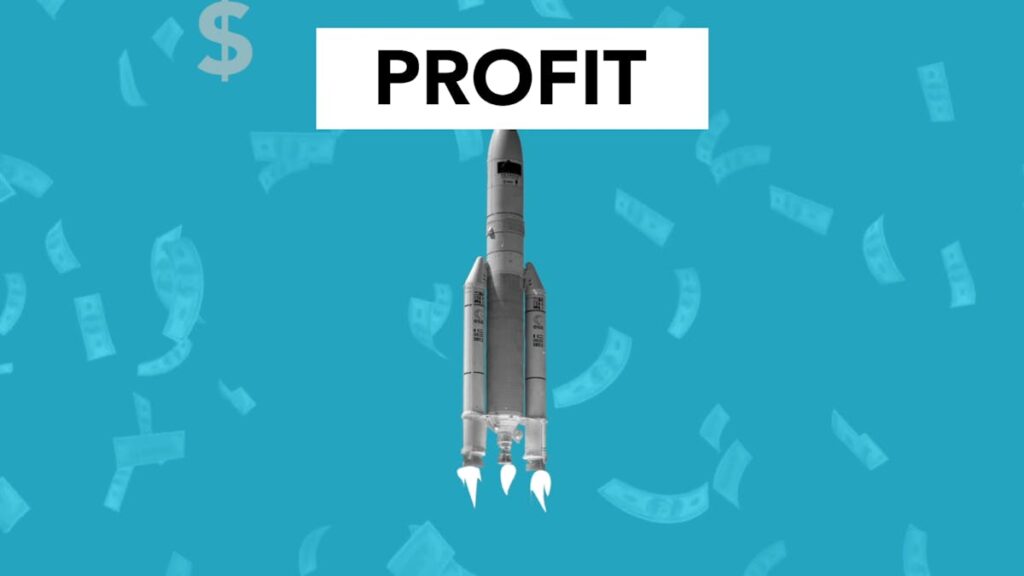Ever wondered how to value a lending business?
You’re not alone.
Whether you’re looking to buy, sell, or simply understand the worth of a lending operation, nailing down an accurate valuation is crucial.
But here’s the thing: valuing a lending business isn’t like valuing your average mom-and-pop shop.
It’s a whole different ballgame.
You’re dealing with complex financial instruments, risk assessments, and market fluctuations that can make your head spin.
But don’t worry, I’ve got your back.
In this post, I’m going to break down the process into 7 simple, actionable steps that even a financial novice can follow.
By the end, you’ll have a solid grasp on how to put a dollar sign on that lending business you’ve got your eye on.
So, let’s dive in and demystify the world of lending business valuation.
What You’ll Need to Value a Lending Business

Before we roll up our sleeves and get into the nitty-gritty, let’s make sure you’re equipped with the right tools for the job.
Here’s what you’ll need to value a lending business effectively:
- Financial statements: At least 3-5 years of balance sheets, income statements, and cash flow statements.
- Loan portfolio details: Breakdown of loan types, terms, interest rates, and performance metrics.
- Risk management documentation: Policies, procedures, and historical performance data.
- Market research tools: Access to industry reports and competitor analysis.
- Valuation software: Tools like DealSense or ValuAdder can streamline the process.
- Financial calculator: For crunching those complex numbers.
- Spreadsheet software: Excel or Google Sheets will be your best friend.
Now, before you start gathering all this stuff, take a breath.
You don’t need to be a financial wizard to use these tools effectively.
The key is to approach this methodically.
Start by organizing all the financial documents you can get your hands on.
Create a dedicated folder on your computer or in the cloud to store everything.
Trust me, staying organized from the get-go will save you hours of frustration down the line.
And here’s a pro tip: if you’re valuing someone else’s lending business, don’t be shy about asking for information.
The more data you have, the more accurate your valuation will be.
Remember, knowledge is power in this game.
Step-by-Step Instructions to Value a Lending Business

1. Gather Financial Statements
First, you need to get your hands on those financial statements.
We’re talking balance sheets, income, and cash flow statements for at least the past 3-5 years.
Why so many?
Because we want to spot trends, not just snapshots.
Here’s what to look for in each:
- Balance Sheets: Assets, liabilities, and equity. Pay special attention to the loan portfolio – it’s the bread and butter of a lending business.
- Income Statements: Revenue streams, interest income, and expenses. This will give you a clear picture of profitability.
- Cash Flow Statements: How money moves in and out of the business. In lending, cash is king.
Pro Tip: Don’t just skim these documents.
Dive deep.
Look for anomalies, sudden changes, or anything that doesn’t quite add up.
If something smells fishy, it probably is.
Warning: Be wary of financial statements that a reputable firm doesn’t audit.
Unaudited statements can be manipulated and might not give you the full picture.
2. Analyze Loan Portfolio Quality
Now that you’ve got the financials, it’s time to put on your detective hat and dig into the loan portfolio.
This is where the rubber meets the road in a lending business.
Here’s what you need to assess:
- Loan types: What kinds of loans are they offering? Personal loans, business loans, mortgages?
- Interest rates: Are they competitive? Too high might mean higher risk borrowers.
- Default rates: How many loans are going bad? This is crucial for assessing risk.
- Loan-to-value ratios: For secured loans, this tells you how much cushion the lender has.
- Average loan size: This can indicate the type of borrowers they’re targeting.
Pro Tip: Create a spreadsheet to track these metrics over time.
Look for trends.
Is the quality improving or declining?
A portfolio with a high concentration in one type of loan or industry can be risky.
Diversification is key in lending.
3. Assess Risk Management Practices
Risk management is the backbone of any lending business.
You need to understand how they’re mitigating potential losses.
Here’s what to look for:
- Underwriting criteria: How do they decide who gets a loan?
- Credit scoring models: Are they using outdated methods or cutting-edge AI?
- Collection procedures: How do they handle late payments and defaults?
- Compliance measures: Are they following all relevant regulations?
Pro Tip: Ask for historical data on loan performance.
This will show you how effective their risk management has been in practice, not just on paper.
Be cautious of businesses that seem to have lax risk management.
It might mean higher profits now, but it’s a ticking time bomb.
4. Evaluate Market Position and Growth Potential
A lending business doesn’t operate in a vacuum.
You need to understand its place in the market and its potential for growth.
Consider these factors:
- Market share: How big a player are they in their niche?
- Competitive advantages: What sets them apart from other lenders?
- Target demographics: Who are their ideal customers?
- Expansion plans: Are they looking to enter new markets or offer new products?
Pro Tip: Look at macroeconomic factors too.
Interest rates, regulations, and economic cycles all impact lending businesses.
Warning: Be skeptical of overly optimistic growth projections.
It’s better to underestimate growth than to overvalue based on pie-in-the-sky forecasts.
5. Calculate Key Financial Metrics
Now it’s time to crunch some numbers.
These financial metrics will give you a quantitative view of the business’s performance:
- Return on Assets (ROA): How efficiently are they using their assets to generate profit?
- Net Interest Margin (NIM): The difference between interest earned and paid out.
- Efficiency Ratio: Operating expenses divided by revenue. Lower is better.
- Capital Adequacy Ratio: How much capital do they have to cover potential losses?
Compare these metrics to industry benchmarks.
You can find these in reports from organizations like the Federal Reserve or industry associations.
Warning: Don’t rely solely on these metrics.
They’re important, but they don’t tell the whole story. Always view them in context.
6. Apply Valuation Methods
With all this data in hand, it’s time to actually put a number on this lending business.
There are several methods you can use:
- Discounted Cash Flow (DCF): Project future cash flows and discount them to present value.
- Comparable Company Analysis: Look at the valuation multiples of similar public companies.
- Precedent Transactions: Analyze recent sales of similar lending businesses.
- Asset-Based Valuation: Particularly relevant for lending businesses with significant tangible assets.
Pro Tip: Use multiple methods and compare the results.
If they’re wildly different, you might need to revisit your assumptions.
Warning: Be careful with the assumptions you use in your models.
Small changes can lead to big swings in valuation.
7. Consider Intangible Assets
Don’t forget about the stuff you can’t touch but still adds value:
- Brand reputation: A trusted name in lending is worth its weight in gold.
- Customer relationships: Long-term, loyal customers are incredibly valuable.
- Proprietary technology: Custom lending platforms or AI models can be significant differentiators.
- Human capital: A skilled team with deep industry knowledge is priceless.
Pro Tip: While it’s hard to put an exact number on these, they can significantly impact the final valuation.
Don’t ignore them.
Warning: Be cautious of overvaluing intangibles.
They’re important, but they should complement, not overshadow, the tangible financial metrics.
Tips for Success

Valuing a lending business isn’t just about following steps.
It’s an art as much as a science.
Here are some tips to help you nail it:
- Stay objective: It’s easy to get emotionally invested, especially if you’re looking to buy. Always let the numbers guide you.
- Consider multiple scenarios: Don’t just look at the best-case. Model out pessimistic and realistic scenarios too.
- Update your valuation regularly: The lending market can change quickly. What was true six months ago might not be true today.
- Understand the regulatory environment: Regulations can make or break a lending business. Stay informed about current and potential future rules.
- Look beyond the numbers: Company culture, management quality, and strategic vision all play a role in long-term success.
- Seek expert opinions: Don’t hesitate to consult with industry experts or valuation professionals. Their insights can be invaluable.
- Consider the economic cycle: Lending businesses can be sensitive to economic ups and downs. Factor this into your valuation.
Remember, the goal isn’t just to arrive at a number.
It’s to understand the true value of the business, warts and all.
Common Mistakes to Avoid When Valuing a Lending Business
Even seasoned pros can slip up when valuing a lending business.
Here are some pitfalls to watch out for:
- Overlooking hidden liabilities: Make sure you’ve accounted for all potential risks and obligations.
- Ignoring industry trends: A business might look great on paper, but if the industry is in decline, that’s a red flag.
- Overrelying on historical data: Past performance is important, but it’s not everything. Focus on future potential too.
- Neglecting customer concentration: If a large portion of loans are to a single borrower or industry, that’s a risk.
- Misunderstanding the revenue model: Make sure you know exactly how the business makes money.
- Failing to account for cyclicality: Lending businesses can be highly sensitive to economic cycles.
- Ignoring technology: In today’s world, outdated tech can quickly make a lending business obsolete.
The key here is to be thorough and skeptical.
Don’t take anything at face value.
Dig deep, ask questions, and always look for the catch.
Troubleshooting And Fixing Issues
Even with the best preparation, you might hit some snags in the valuation process.
Here’s how to handle common issues:
- Problem: Inconsistent financial data Solution: Go back to the source. Request clarification on any discrepancies. If necessary, consider hiring an auditor.
- Problem: Difficulty projecting future cash flows Solution: Use sensitivity analysis. Model multiple scenarios based on different assumptions.
- Problem: Lack of comparable companies Solution: Broaden your search. Look at companies in adjacent industries or different geographical markets.
- Problem: Uncertainty about regulatory changes Solution: Model different scenarios based on potential regulatory outcomes. Consult with legal experts if necessary.
- Problem: Valuation methods yielding wildly different results Solution: Review your assumptions for each method. Consider weighted average of different methods based on their relevance.
Remember, valuation is not an exact science.
It’s okay to have some uncertainty.
The key is to understand and explain the reasons behind your final number.
Alternative Ways to Value a Lending Business

While the 7-step process we’ve outlined is solid, there are other approaches you might consider:
- Earnings Multiple Method This simple approach involves multiplying the company’s earnings by a factor based on industry norms. When to use: For quick, ballpark estimates or when detailed financial data is limited.
- Dividend Discount Model This values a company based on the present value of its expected future dividends. When to use: For mature lending businesses with a history of consistent dividend payments.
- Real Options Valuation This method factors in the value of future strategic opportunities. When to use: For lending businesses with significant growth potential or strategic flexibility.
- Regulatory Capital Method This approach values the business based on the amount of regulatory capital it’s required to hold. When to use: Particularly relevant for banks and other heavily regulated lenders.
- Liquidation Value This method calculates the value of the company if all its assets were sold off. When to use: For distressed lending businesses or as a “worst-case scenario” valuation.
The choice of method depends on your specific situation and the characteristics of the lending business you’re valuing.
Often, the best approach is to use multiple methods and triangulate to a final value.
Final Thoughts
Alright, let’s bring it home.
We’ve covered a lot of ground on how to value a lending business.
From gathering financial statements to analyzing loan portfolios, from crunching numbers to considering intangibles, we’ve broken down this complex process into manageable steps.
Remember, valuing a lending business isn’t just about arriving at a number.
It’s about understanding the true worth of the operation, including its strengths, weaknesses, and future potential.
The 7-step process we’ve outlined gives you a solid framework, but don’t be afraid to adapt it to your specific situation.
And here’s a final piece of advice: don’t go it alone if you don’t have to.
Valuing a lending business is complex stuff.
There’s no shame in bringing in experts to help, especially if there’s a lot riding on the valuation.
Whether you’re looking to buy, sell, or just understand the value of a lending business, I hope this guide has given you the tools and confidence to tackle the task.
Now go out there and start crunching those numbers!
Read also:
- 11 Proven Marketing Tactics for Growing Your Lending Business
- 10 Risks to Watch Out for When Starting a Lending Business
- 7 Proven Exit Strategies for Lending Businesses: Which One is Right for You?
FAQs
Q: How often should I update my valuation of a lending business? A: It’s a good practice to update your valuation at least annually, or more frequently if there are significant changes in the market or the business itself.
Q: What’s the most important factor in valuing a lending business? A: While all factors are important, the quality of the loan portfolio is often the most crucial. It directly impacts the business’s profitability and risk profile.
Q: How do interest rate changes affect the valuation of a lending business? A: Interest rate changes can significantly impact a lending business’s profitability and thus its valuation. Rising rates can increase income but may also lead to higher default rates.
Q: Is it possible to value a lending business without full access to their financial data? A: While it’s possible to make rough estimates based on publicly available information, accurate valuation requires detailed financial data. Without it, your valuation will be less reliable.
Q: How do I account for future growth potential in my valuation? A: Future growth potential is typically factored into cash flow projections used in methods like Discounted Cash Flow (DCF). Be sure to base your growth assumptions on realistic market and company-specific factors.




